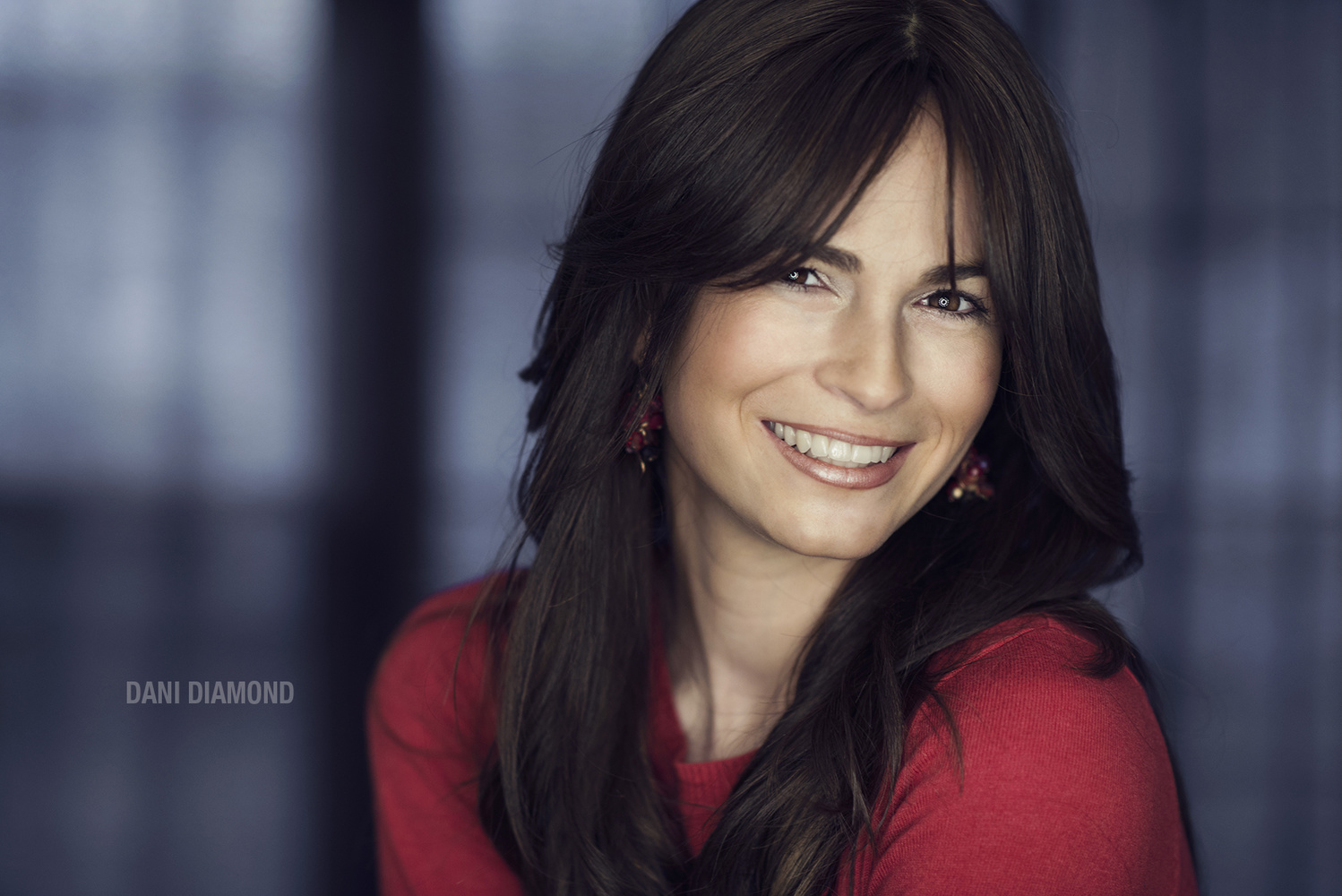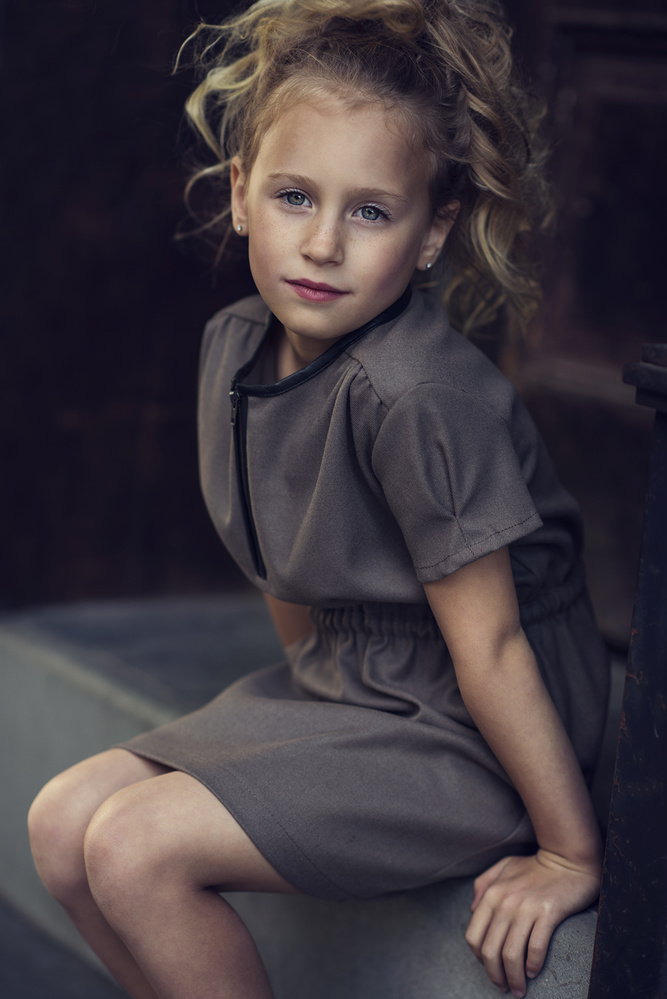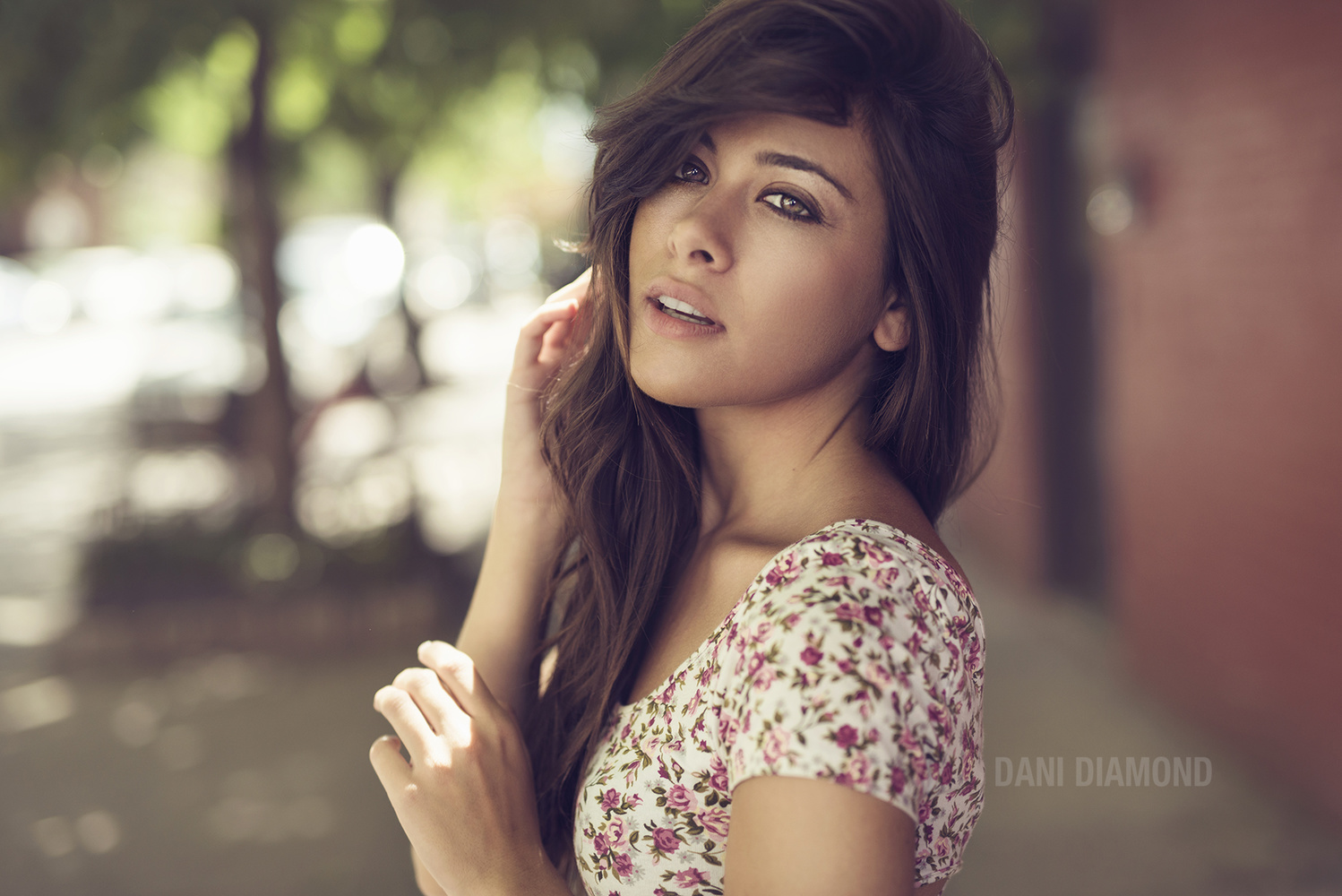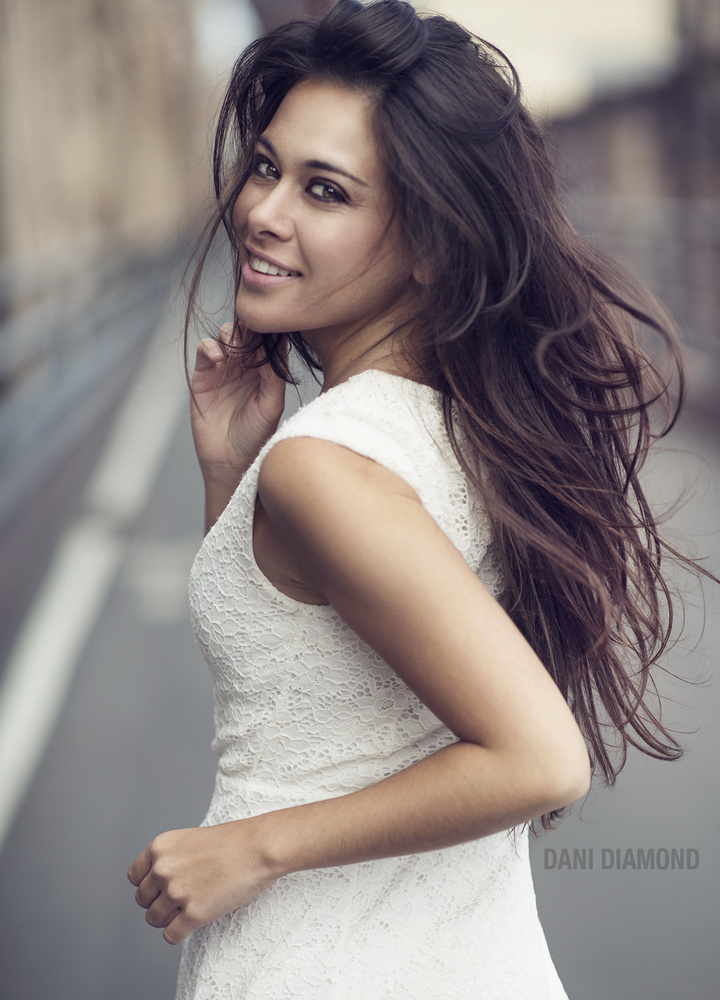Buying expensive gear and mastering lighting and technique play an important role in photography but ultimately, these things are secondary in achieving a solid portrait when facial expressions are factored in. No matter the genre of photography, whether it's fashion, weddings or family portraits, connecting to the subject is far more important than any other detail in shooting portraits. When portraying a personality or specific mood, there is a necessity to connect and extract emotions and moods.
Until four years ago, being photographed was something I detested. A lot of this is due to the fact that as a young child, my mother used to take my siblings and I to JCPenny for family portraits. They shoved teddy bears in our face and forced us to smile with the promises of lollipops, toys and everything else under the moon. The experience was awful and I remember my siblings and I leaving frustrated and upset. There is no question that those photo shoots left a bad taste in my mouth for photography.

(All images in this article have been taken by Dani Diamond )
As I found interest in taking on photography, I swore to myself that if I ever put someone in front of my camera, I was going to make sure they have an amazing experience. The problem was that naturally, I am an introvert. It was a challenge because I struggled with getting my subjects to open up and feel natural in front of the camera. With time I was able to overcome this issue. I'd like to share a few tips I found most important when trying to connect to subjects in order to get the ultimate expression.

1. The most important thing I've learned is that it's crucial to make a photo shoot feel like two people just hanging out. The element of the camera and gear can cause anxious feelings in the subject. Personally, I keep my camera tucked away for the first 15 minutes of meeting my client. As soon as I meet the client, it's just me and my backpack. We go for a walk, and I have a list of prepared questions in my head. I look out for the things they show an interest in and I ask them more about those things. People, when they are passionate about something, can talk about that subject matter for hours and hours. We know this because as passionate photographers, we can talk about gear and technique for days on end. Once they open up, casually say "Hey hold that pose or expression, I love it!" while quickly taking out your camera and snapping 2 shots. Look at your screen and no matter what it looks like just smile while saying you love it and you can call it a day already.

2. When doing a photo shoot of children, tell the parents beforehand to relay to their children that they are going to the park to hang out with a friend. Children don't like going on photo shoots and parents promising candy or toys will only help for the first 10 minutes. Once you meet the children, play freeze tag or cops and robbers with them for the first 15 minutes. They will love you and listen to anything you say once you pull out the camera.

3. As mentioned above, it's important to talk about what your subject likes, not "geek talk." Most people, including models, don't enjoy talking about shutter, iso and aperture. Refrain from sharing settings and geek talk during the shoot. Continue the conversation you were having and every once in a while give them directions. Make them feel like they are hanging out with you and it will ease any tension they feel when the camera is facing them.

4. If your subject does something that doesn't look right in the picture, there's no need to tell them that their hand placement is bad. Rather, say "it looks better if you were to do…" Keeping a positive mood will excite your subject and help them be themselves. Being negative will only close off your subject to any constructive critique. Positivity goes a long way.

5. I never ask people to smile. Smiles, if not something that happened naturally can look fake and artificial. When it comes to specific expressions and looks, Peter Hurely's DVD teaches you dozens of techniques to get the ultimate expression. They are worth checking out. He has a few free tutorials on his channel too.
6. If you are going for a more candid/lifestyle look, I find that giving people scenarios to act out is the best way to go about achieving the best expressions. For example, in this photo, I asked my subject to imagine running away from a friend chasing her to tickle her. I told her to look back at me every few steps.

Fellow Fstoppers writer John Schell is a master at this. He creates scenarios for his subjects which help him capture the exact expressions he had imagined.
7. Regardless of the model's experience or your personal skill level, I find that the first few minutes of a shoot are not as "comfortable" as those that happen later on. It takes 50 or so shots until you get into the groove as a photographer and the subject feels comfortable in front of your camera. I find that it helps to just snap away, don't bother looking at the results and make a joke "I never look at the first 50 images, we're just warming up now." Also note that it's best to save your ideas and poses towards the middle or end of a shoot -- once you're both more comfortable.

When it comes to mastering the art of connecting with your clients and subjects, very few people out there have this skill naturally. As time goes on, you will find the right "rhythm" to achieve this. Being aware of the necessity to connect is crucial and will allow you to grow and further hone in your talent.
Dani Diamond | Facebook | Facebook Page | 500px | Instagram | Twitter




Great article. I find this to be one of the most challenging aspects of photography.
great article about an important subject. nice work dani!
where's the copy editor though fstoppers?!
What did I miss?!
Great tips. Simple things so many photographers overlook.
Great article. This is something I always struggle with during sessions. I'll spend days planning for a shoot and have everything worked out in my head, but when the shoot comes, I freeze up and forget all the poses I had in mind. I also have a slight stuttering problem, so that is a BIG issue when it comes to communicating with the model. I tend to only say a few words at a time, and usually never anything very useful. I'm still learning everyday, and articles like this really help. Thanks Dani!
Great article! Posing and directing are my biggest issues at the moment because I am a bit introverted and shy, and it is sometimes difficult to have conversation when I first meet people.
Really great tips! I am guilty of doing a lot of the bad things you mentioned, especially the “geek talk.” I’m definitely going to put these tips to good use.
Great read as always Dani.
good article!
After reading an article about this same topic a few months ago I began constantly talking, giving direction and positive reinforcement to clients. It improved the quality of the session and made my clients more confident that they was dealing with a professional photographer and not just a dude with a camera.
So many wonderful images here. Love the article as well. It is exactly part of what I need to learn.
Wonderful advice... Thank you Dani :)
This was a great read! Thank you for sharing your fantastic photos and words of wisdom. I am an introvert too and find that I have the same problem. Great tips Dani!
Another great post Dani! This is definitely one of the hardest and most important things to master as a photographer. Very useful tips!
Awesome article and absolutely spot on, great job Double D!
Great article! Something alot of photographers overlook often (including myself) :)
Great Article Dani. Keep up your good work. Inspiring
Thank you for this article really helps to break that wall between the photographer and the client..
Salamat!
Awesome article just what i need i'm going to begin a portrait project about unkonwn person on street that are no common thanks Dani
Thank you, Dani. I especially love your photos for #'s 2 & 6! Some day I hope to be about a tenth as gifted as you are! :)
One thought I had about getting to know children: it's so unfortunate but in the kind of world we live in today children have to be very careful about getting to know and trust adults, and parents have to be vigilant in helping them learn how to navigate this too. So unless I really am a friend of the parent I might feel uncomfortable telling a parent to tell the child that's who I am. I think I might ask to be introduced as "a photographer that I (Mom or Dad) have gotten to know and I think you're going to really like working with." This keeps clear for the child the boundary of the professional relationship but presents you in an affirming way. Also, one other note (I'm sure you probably assume this): if kids are at all reluctant to play with you (you are after all a strange adult) they shouldn't be pressured to at all. I personally would get to know the kids on their terms: in case they don't want to play, or are reserved, ask them to also bring a favorite game or toy and tell you about it...with Mom or Dad nearby of course!
Thanks again!
This is definitely my focus right now. Nice pep talk, thanks.
Communication is one of my biggest issues right now. I need to get out of shell a little bit more during a shoot to get better expressions. I'm getting there but it's a tough road as an introvert. I don't want to say the wrong thing and ruin a shoot.
Guilty of "geek talk", too.
Now, I use it when I want that look- in- the- distance- expression from my model. Works like a charm.
Most of the times, I catch myself nowadays.
Great article but the pictures are just fantastic. The second photo is probably the definition of how to make a middle-age woman look drop-dead gorgeous.
Content of the article aside for a second...how do you get such draw-in on the eyes of these subjects. The post work here is equally as spectacular as your article content(assuming this isn't all in-camera). Almost every single photo I'm completely drawn into the eyes...more so than most portraits. They could be almost naked and I would still be looking at the eyes.
Very Inspirational. Thanks, Dani Diamond. :)
great suff mate will take this onboard :)
Thanks for the tips.
I just found this article and I'm very appreciative of your sharing your knowledge. Being a beginner (and an introvert) this article was very educational. Thanks again!
Late to the party...but your advice still stands good, love both your style and your shots, even for a long in the tooth old timer like myself. The only small thing I would care to add is, what I call dynamic posing rather than static, the addition of small movement This I feel adds freshness and a variety to an expression and goes someways to achieve that natural look.
The other point letting the subject take up a position that is natural to them rather than imposing one.